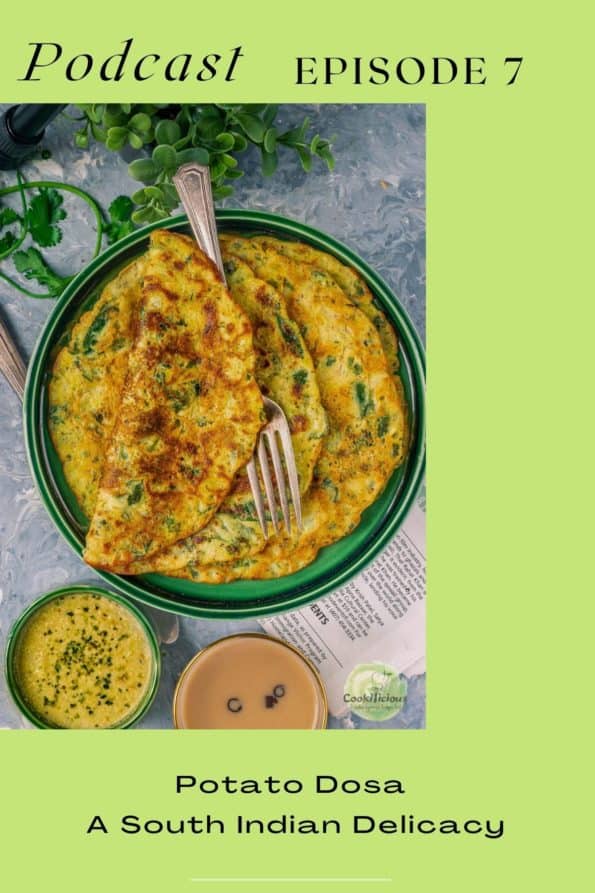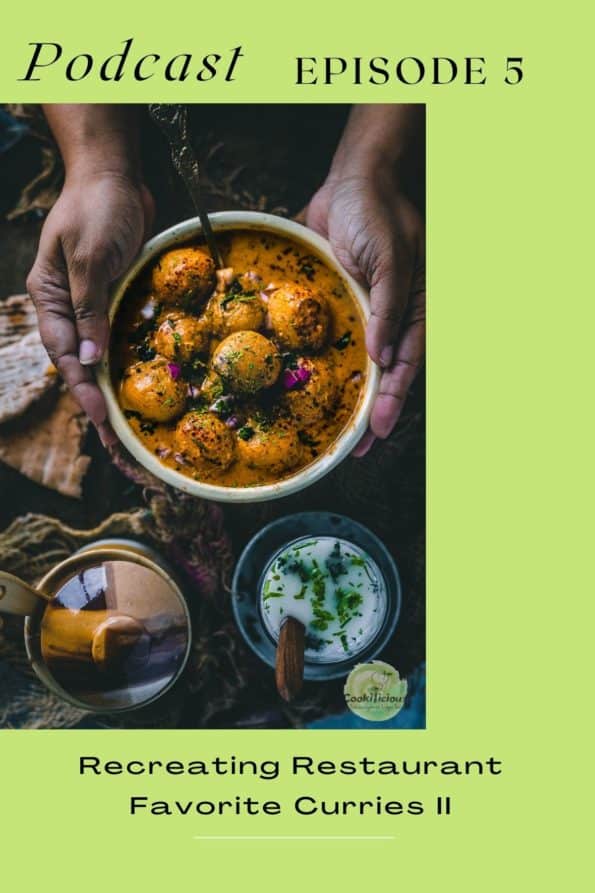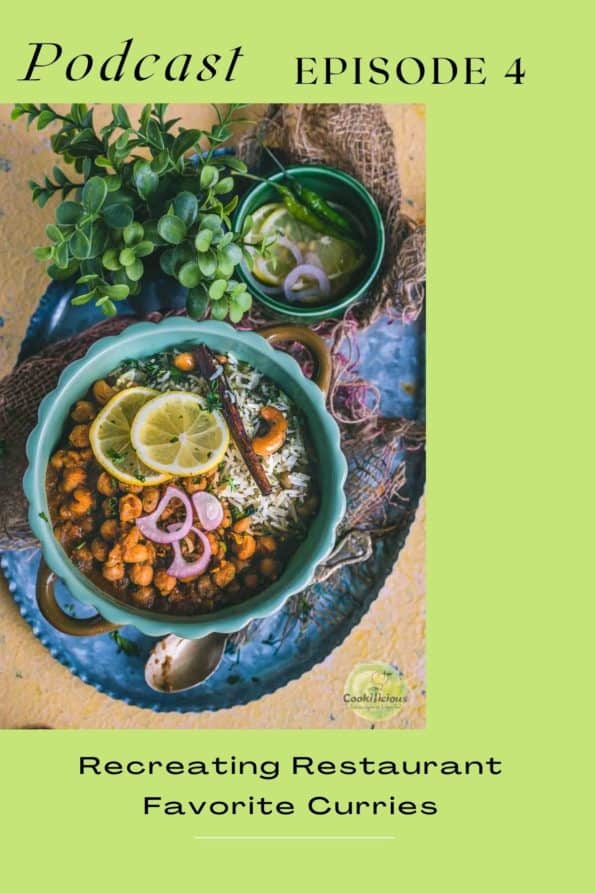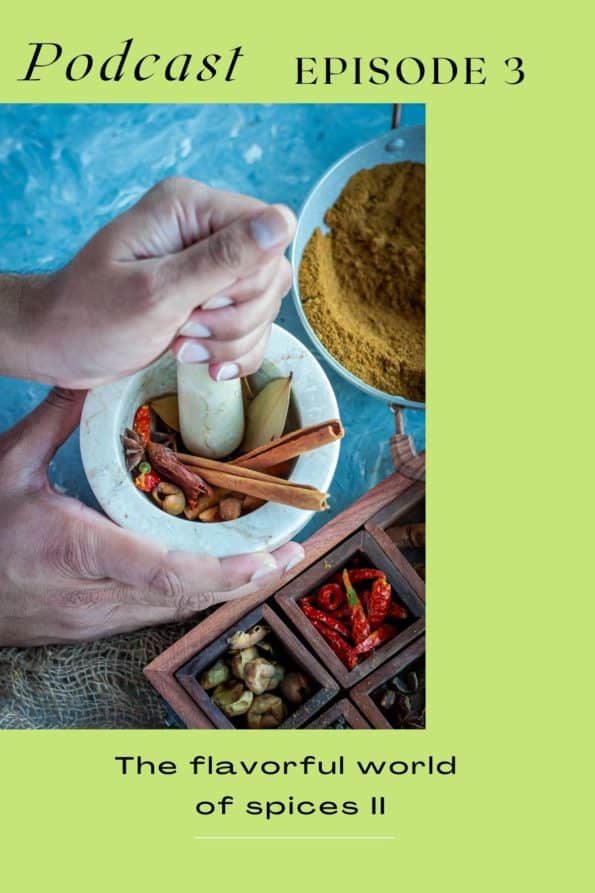
Ease into Indian vegan/vegetarian cooking and work your way up from simple spice mixes to complex curries.
My food blog Cookilicious features a collection of detailed, mouth-watering vegetarian and vegan recipes. This is our sixth episode, in which I have shared the recipe for Idli-chutney. This is a delicious breakfast dish from Southern India.
Idli is a steamed rice cake that is popularly paired with a condiment called a Chutney. The recipes for Idli and Chutney that I'm going to talk about in today's episode are:
You will find more chutney recipes on this page:
Here are some more Idli recipes on my blog:
- Healthy Green Amaranth Potato Idli
- Oil-Free Bulgur Wheat Spinach Idli
- Sweet Corn & Bulgur Wheat Mini Steamed Idli
To prepare idlis, you will need an Idli cooker that you can get from here:
If you try any of these dishes, then I would love to see photos of your dish - my Instagram handle is @cookilicious.
If you have any questions or feedback, please write to us at contactthechef@cookilicious.com.
If you have been listening to our podcast regularly and like it, then please subscribe so you are aware of new episodes when they come online.

Episode 6 - Idli-Chutney, A Delicious South Indian Breakfast
Hello and welcome to the sixth episode of Cookilicious Kitchen Stories. In our last episode, we talked about making Dum Aloo, a popular dish from North India. Today, we’ll be talking about a delicacy from the South of India. Before we start, I’d like to request you to take a moment to subscribe to our podcast.
Step into any Indian restaurant and one of the staple items on the menu will be ‘Idli-Chutney’. Idli-chutney is a breakfast item that originates from the South of India, and has a fan following all over the world. Though this is a breakfast item, it’s very popular throughout the day for people who want a quick snack.
Idlis are savory steamed cakes made of fermented rice and lentil batter. They are mildly flavored, soft, and fluffy in texture. They are almost always round disc-shaped and white in color. A Chutney is a condiment that the Idli is often eaten with.
Growing up, my mother used to make this dish a lot, so it’s kind of a comfort food for me. I almost always have some Idli batter lying around in my fridge. On days that I don’t feel like cooking something elaborate, I usually make Idli-chutney.
There are many varieties of Idlis. The recipe I’m going to talk about today is the basic one. This has been my go-to Idli recipe for years now. It's a family recipe that’s been passed down for many generations.
There are 3 steps to making a good Idli: soaking, grinding, and fermenting. The quality of the Idli depends on the proportion of ingredients, consistency of the batter and the fermentation of the batter. This recipe will yield approximately 20-30 Idlis.
To make Idlis, there are five basic ingredients you will need
- 2 cups of Idli Rava or parboiled rice: the key ingredient for this recipe.
- ½ cup of Split Urad Dal: These lentils help in binding and enhance the taste.
- ¼ cup of Poha or Flattened Rice – You can use thick or thin poha. Adding poha makes the Idlis soft and fluffy.
- 1 teaspoon Fenugreek/Methi Seeds – Fenugreek seeds contain compounds high in beta-glucans which help hold carbon dioxide. That makes the idlis fluffy and soft. They also give viscosity to the batter and aid in the fermentation process.
- Salt as per your taste: I use rock salt instead of regular table salt. Table salt may contain anti-caking agents which may interfere in fermentation.
You will find all the ingredients at your nearest Indian grocery store or online on Amazon
Although the process of making Idli batter takes a couple of days, it's still minimal effort. The steps to prepare the batter is as follows:
1. Rinse the Idli Rava in a strainer. Then soak it in water for about 5-6 hours or overnight.
2. Rinse the Urad Dal, Methi seeds, and Poha in a strainer under running water and then soak them all together in a bowl for 8 hours.
3. Drain the water from Idli Rava and transfer to a wet grinder jar. Most Indian grinders come with this attachment, but you can use a regular blender as well. Grind to a smooth paste by adding very little cold water gradually.Pour the batter into a bowl and set aside.
4. Drain the water from the Urad Dal, Methi seeds, and Poha. Transfer to the grinder jar and grind. Add cold water gradually only if the mixture is too thick to grind. The mixture should fluff up and fill the grinder jar. Combine this mixture with the batter in the previous step.
5. Add salt. Mix well using your hands if possible as the body heat aids in fermentation. The batter should be of thick pouring consistency. Add some water if it's too thick.
The batter is now ready for fermentation. Place the batter in an uncovered bowl in a warm, dry area for 8 hours or overnight. I usually place it in my turned-off oven with a plate underneath it. In case the batter rises and overflows, the plate will catch the excess so there’s no mess. I also leave the oven light on.
After about 8 hours, you will notice the batter has risen and has a slight sour smell to it. If it has not risen much, leave for a couple of more hours. Using a spoon, give the batter a quick stir and then place the bowl in the fridge to use when needed. With this, we’re done with the fermentation step.
To make the Idlis, you’ll need an Idli cooker, or a pressure-cooker with the Idli attachment. When you’re ready to make the Idlis, get the batter out of the fridge. Grease the Idli molds with cooking spray or vegetable oil, so the Idli will not stick to the mold. Then pour some batter so it fills the mold up completely. Add a little water to the bottom of the cooker and then place the Idli plates on top. Steam for about 10-12 minutes and let stand for 4-5 minutes before opening the cooker.
Do not overcook, the Idlis may become hard and dry. Sprinkle water on the Idlis, and then spoon them out. Your Idlis are ready!
Now, let’s talk about chutney. The recipe I’m going to share today is for a Peanut Tomato Chutney. For this chutney, the ingredients you will need are:
- 1 tablespoon of oil
- 2 roughly chopped tomatoes
- 1 cup of shelled, skinned, unsalted peanuts
- 2 cloves of garlic
- 2-3 dried red chilies
- Salt as required
To make this chutney,
- Add ½ tablespoon of oil to a pan and sauté the tomatoes until they turn soft and mushy. Transfer them to a plate.
- Add ½ tablespoon of oil to the pan again and now add the peanuts, garlic and the chillies. Sauté everything for about 2 minutes. Transfer to a plate and let it cool
- Now add everything to a blender along with the salt and blend to a smooth paste.
Most chutneys are no-cook, but you can enhance the flavor of the chutney by adding Tadka. Tadka or tempering, is the method of cooking spices in oil or ghee and then adding it to a dish. For the Tadka, you will need,
- 1 teaspoon oil
- 2 teaspoons mustard seeds
- 1 tablespoon Urad Dal
- 5-6 curry leaves
First, add the oil to a pan. Add the mustard seeds , Urad Dal and the curry leaves. Once the mustard seeds sputter, pour the mixture over the chutney and mix lightly. Your chutney with Tadka is now ready. Serve along with hot, fresh Idlis and enjoy!
This concludes our podcast for today. I hope you enjoyed today’s episode. I’ve added links to a few Idli recipes on my blog. They all have detailed process shots and more tips and suggestions. Also included is a link to the condiments page featuring an assortment of chutneys. Please do check them out. If you have any questions or feedback then please drop us an email. If you liked the podcast, then please take a moment to subscribe to the podcast. I’ll be back soon with more delicious recipes. Until next time, this is Priya signing off. Stay safe and keep cooking delicious!
For more Idli recipes, click HERE and for condiment recipes, click HERE.






Leave a Reply